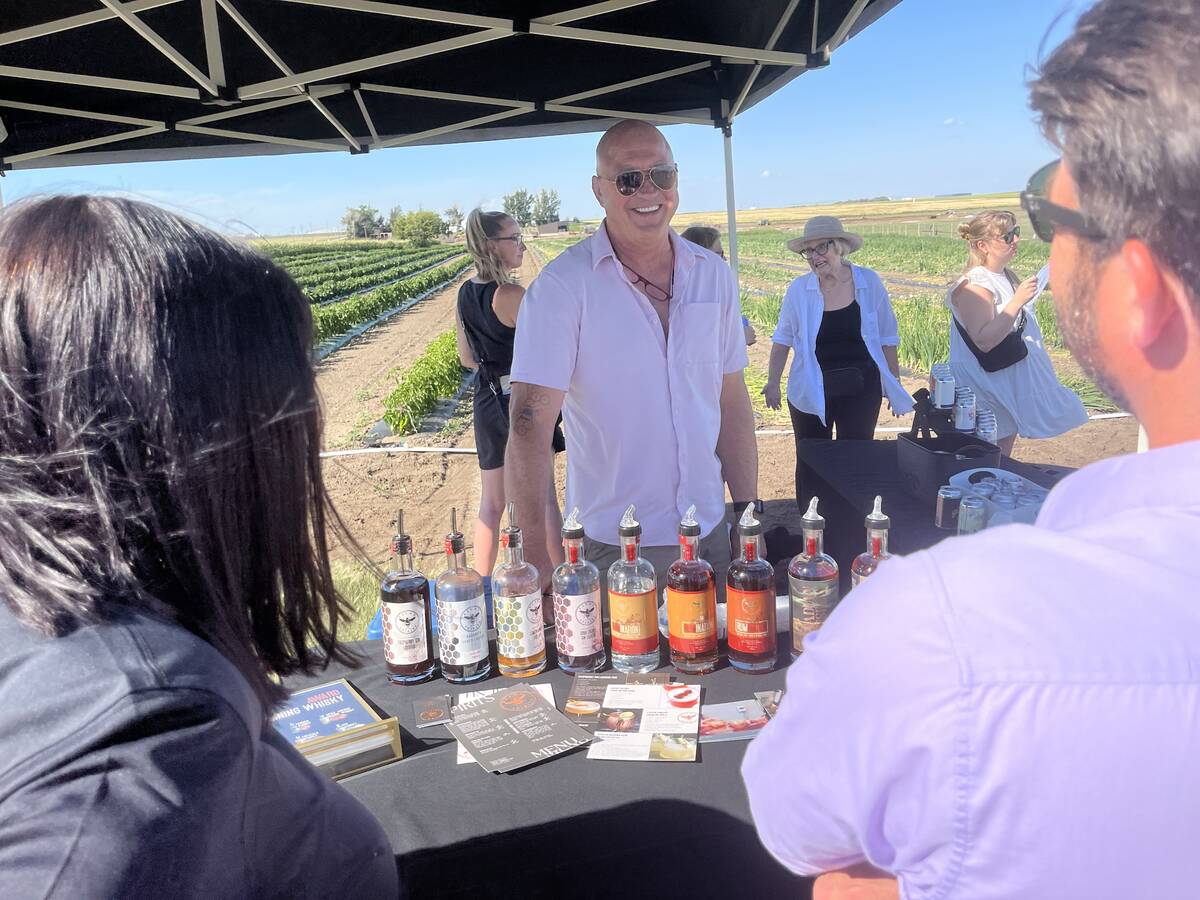CANMORE, Alta. – Guarding against animal and human disease should be part of a farm safety plan, says the director of animal care at the University of Alberta.
Many farm families and workers do not realize two-thirds of diseases are zoonotic, which means they are capable of being shared among species including humans, said Craig Wilkinson at the Canadian Agricultural Safety Association annual meeting in Canmore, Nov. 16.
“A lot of diseases that have affected us through history are diseases that animals transmitted to people,” he said.
Read Also

From farmer to award-winning distiller
Pivot Spirits showcases transition from farmer to distiller with provincial award-winning results in Alberta for Lars Hirch
Bubonic plague, bovine tuberculosis, brucellosis, anthrax, salmonella, malaria, yellow fever and rabies are some of them.
For example, bovine tuberculosis was a common problem until 50 years ago in Canada. It is passed through unpasteurized milk and ended up in the bones. Brucellosis could become undulant fever in humans and many veterinarians were infected.
Some diseases like West Nile virus are new to North America, but have been known for decades elsewhere in the world.
In the 20th century people thought zoonotic diseases were conquered but the World Health Organization reports 29 new communicable diseases have emerged, including tuberculosis.
Modern livestock operations where large numbers of animals are housed indoors present new health hazards if workers do not practise proper biosecurity.
“Living and working with animals on farms in Canada can impact human health at the individual level,” Wilkinson said.
Veterinarians are trained to identify zoonoses but do not educate people about potential exposure to various infectious animal diseases, said Wilkinson.
They do not discuss risk pertaining to immuno-compromised people like the elderly, the young or those with other health problems.
Older farmers could have weaker immune systems from diabetes, cancer or organ transplants.
“We have to address the fact that we have a susceptible population, perhaps more susceptible than we have ever had in the past,” he said.
Further, vets do not always take proper precautions themselves like wearing masks, gloves or being careful with needles. Communication between veterinarians and physicians on zoonoses is uncommon.
Exposure to disease may come through feces, urine, vomit, saliva, blood and fetal tissues like placentas or stillborns.
Depending on the pathogen, animals may show no sign of disease.
Wilkinson described a case near Guelph, Ont., where nine people were hired to catch turkeys and seven became ill with campylobacter. The workers did not wear gloves or masks and ate lunch while they worked. Later, they reported diarrhea, cramps and fever. The turkeys appeared fine so no one was alerted to any potential health risks.
People can also get sick from a new unvaccinated puppy or kitten with diarrhea.
A 14-week-old kitten at Innisfail, Alta., came to a veterinarian in September with odd neurological symptoms and a weakened condition. It had not been vaccinated and was ultimately diagnosed with rabies. The entire family as well as the vet clinic staff had to receive a series of injections to prevent the disease.
Rabies is rare in Western Canada so people do not think of it right away. Any mammal showing odd neurological signs must be assessed and sent for testing so treatment can start.
Wilkinson recommends vaccinating farm pets and said farm workers should receive influenza shots.
A person could be incubating a human influenza and might come in contact with another flu among the animals. The viruses may combine into a serious illness that could pass on to the animals.
Smoking in a barn, then touching one’s mouth and face with dirty hands could spread infections.
Cuts are susceptible to infection. Clean them and wear bandages to prevent harmful bacteria from entering the body.
“People who work with animals, we’re not bothered by yucky, gross stuff, but we probably should be, not because it is nasty but because it does have the potential to carry something that we could be infected by or somebody else could,” he said.
Agritourism could also lead to some health problems if children touch animals and then eat something without washing their hands.















